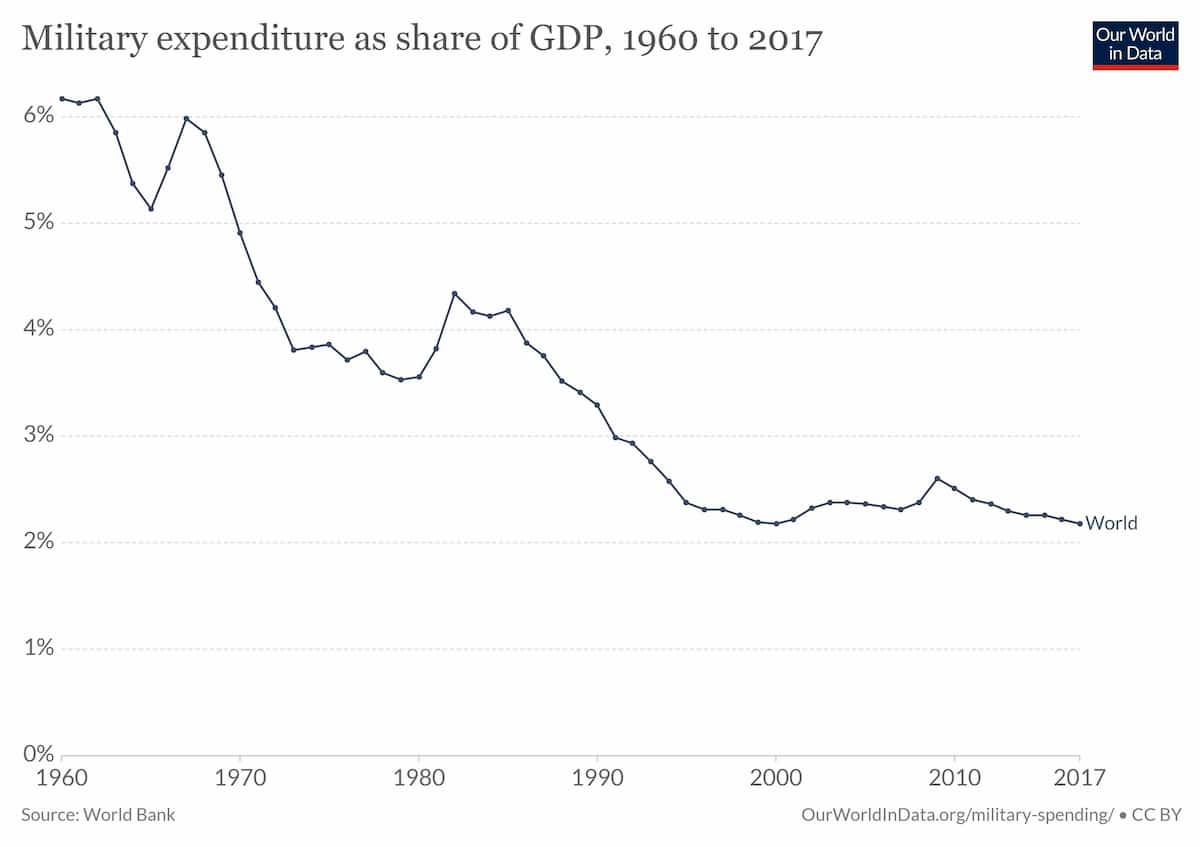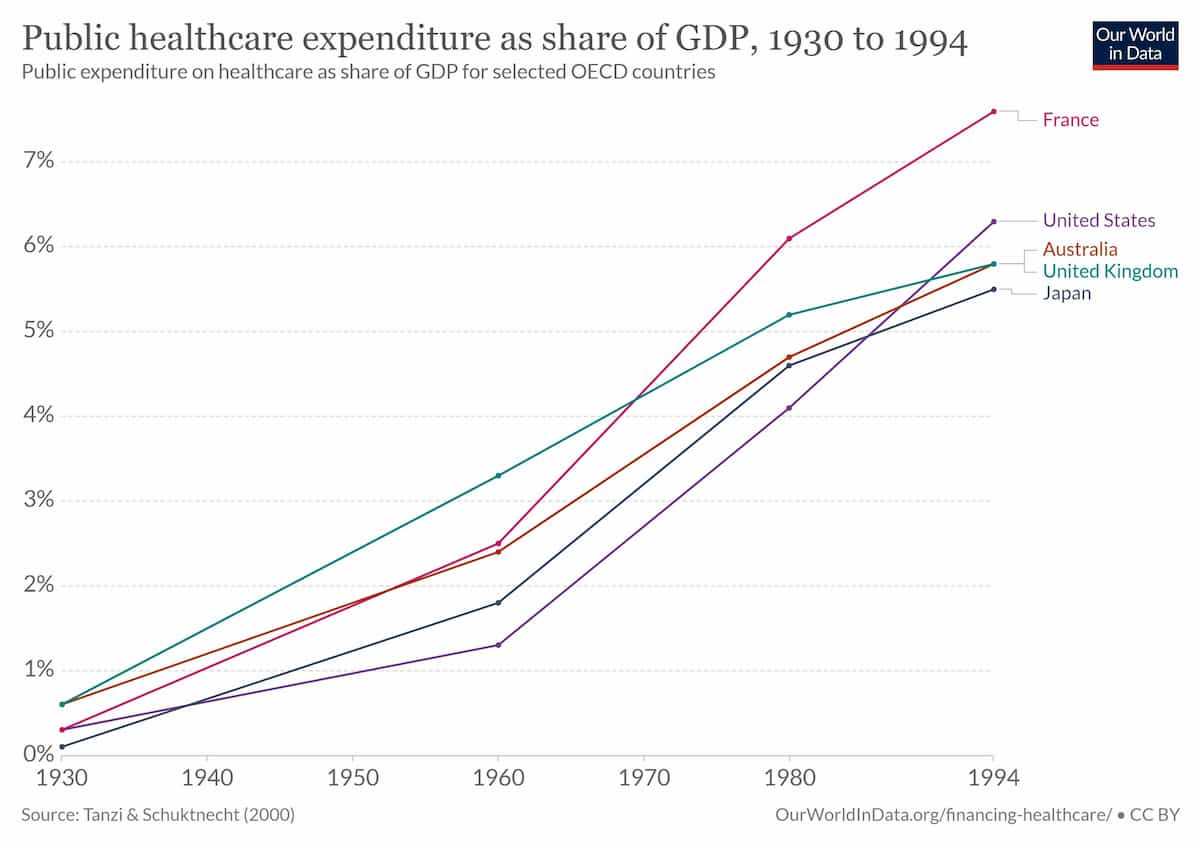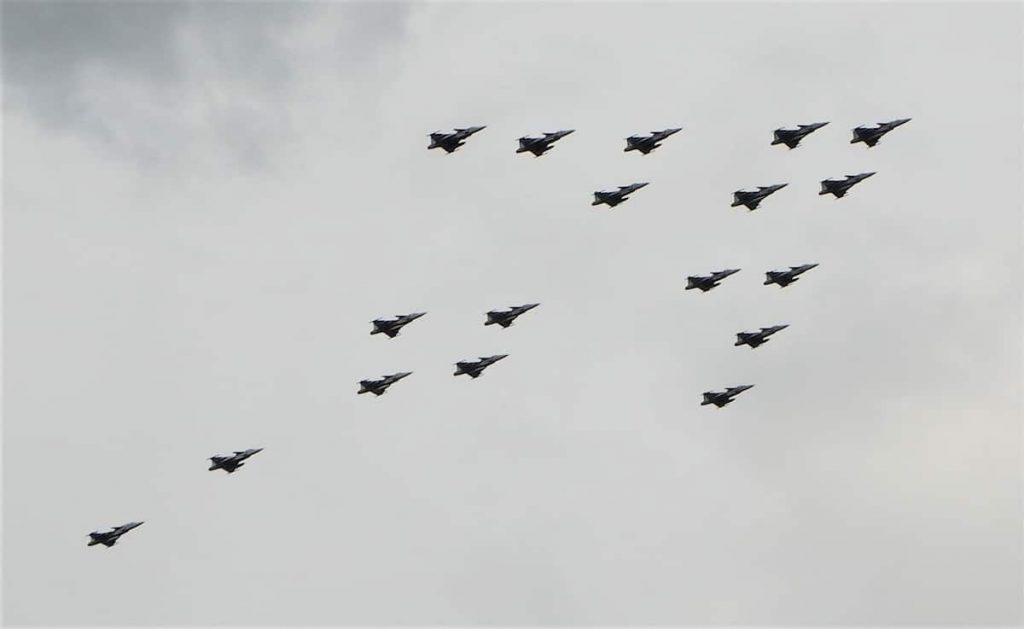Do countries spend more on the military than they do on healthcare and education?
Why is the military so costly?
- Military expenditure is terrible, money-consuming, and non-productive. It’s a sector that contributes to corruption, political instability, and death…
- The military is where disciplined and courageous men are ready to sacrifice their lives to defend our freedom and national integrity.
Both these statements could be true, depending on who you are, and where and when you live. The reason we have a military force can’t be determined easily and very often comes down to who is in charge of it.
But one thing we all must agree on is that it often is an expensive luxury to have a strong military. So, why is it so expensive?
The military, a long time ago
While the old Greeks had an army of soldiers, we have armies of equipment. The ancient time armed forces were men with various weapons, and as such, the expenses were almost exclusively salaries. Today, a big part of the military expenses is taken up by things… Airplanes, ships, canons, and all the high-tech stuff – drones, robots, and various automatic intelligence- and weapon systems.
Soldiers in old times also earned their fair share from looting. Some of the wars were self-sufficient as the armies could simply steal from their enemies or from anybody else who stood in the way. The antique armies were extremely costly in peacetime, but could even be productive, as in providing an economic surplus, in war.

The cost of maintaining a military force was by far the biggest expense a society could have had back then. Furthermore, it was the main reason why the government or the central public administration invented taxes in the first place. Keeping large amounts of soldiers, and constructing and maintaining defense structures, mobile and not, required a lot of money.
Still, the taxes weren’t nearly as heavy as they are today. And the central administration didn’t intervene in people’s everyday life. There were no public schools, no social protection, no pensions, no national debt… And not much healthcare. So, calculating the percentage of the military expenses of old times compared to today maybe isn’t all that meaningful.
Spending in figures
So, how do we spend our tax money… The year 2019?
Looking at the US, military expenses are in second or third place, depending on how you calculate the posts in the budget. With an incredible 676 billion dollars, the armed forces eat up 15% of the national revenue. It is by far the biggest military budget in the world and the US army is also the military force with the best power index in the world.
Still, the cost for the military is far behind healthcare and social security, which together mount up to 40% of the total budget.
This is a general trend in Western Europe and North America. Countries pay more for healthcare than they do for soldiers and guns. But the poorer the country, the more that principle is weakened. Obviously, because a poorer country has less money to spend.
 As you can see the military expenditure today is roughly one-third of the expenses in 1960, as a percentage of the Gross Domestic Product globally. The actual number (2018) is 2,141. That means that a little more than two percent of the world’s GDP is used for military personnel and equipment.
As you can see the military expenditure today is roughly one-third of the expenses in 1960, as a percentage of the Gross Domestic Product globally. The actual number (2018) is 2,141. That means that a little more than two percent of the world’s GDP is used for military personnel and equipment.
Let’s look at the cost of the military in some countries…
The top four countries are:
- The USA $732 billion (Not $676 as mentioned above. That just illustrates how difficult it is to understand a budget.) – 3,4% of the Gross Domestic Product
- China $261 billion. – 1,9% of GDP
- India $71 billion. – 2,6% of GDP
- Russia $65 billion (Only fourth place for the former superpower). – 3,9% of GDP
More countries:
- France $50 billion. 1,8% of the GDP
- South Korea $44 billion – 2,6% of the GDP
- Iran $13 billion – 2,8% of the GDP
- Singapore $11 billion (!) – 3,0% of the GDP
Ok, let’s look at these countries’ healthcare costs.
As the military expenditure worldwide is diminishing, healthcare cost is increasing. More money is available for curing the sick every year, and that too is a good thing. Domestic Government health expenditure per capita worldwide is now a little more than 600 dollars. That is, any person in this world gets an average of 600 dollars to pay for his healthcare costs from his government in one year. The spread here is enormous though. Most money goes to a citizen of the USA, partly because the American health system is of poor cost-efficiency. The least money goes to a citizen in Congo and South Sudan.

Government health expenditure per capita:
- The USA $5139. – 8,56% of GDP (To that you have to add another $5000 from the private health assurance plan.).
- China $476 – 2,92% of GDP
- India $69 – 2,8% of GDP
- Russia $801 – 3,05% of GDP
More countries:
- France $3863 – 8,72% of GDP
- South Korea $1709 – 4,36% of GDP
- Iran $896 – 4,44% of GDP
- Singapore $2058 – 2,14% of GDP
… And the poorest countries:
- The Democratic Republic of Congo $1,93 – 0,40% of GDP
- South Sudan $1,93 – 0,83% of GDP
So, how about Education?
Education is even more difficult to understand, as funding comes from a lot of different sources… Government, region, province, and municipality. I limit myself to giving you the percentage of GDP that the countries pay for general education on every level:
- The USA – 5% of GDP
- China – 4% of GDP
- Russia – 3,7% of GDP
- India – 3% of GDP
- France – 5,4% of GDP
- South Korea – 4,6% of GDP
- Iran – 4% of GDP
- Singapore $8 billion – 3% of GDP
- The Democratic Republic of Congo – 1,5% of GDP
- South Sudan – 1% of GDP
Military expenditure, education, and healthcare – statistics.
 All these numbers should be taken with a grain of salt. Especially those for education, which varies from different sources. Statistics can be deceitful. But we can enjoy a steady trend where the military costs decline and the healthcare costs increase. Maybe governments all over the world finally start to understand what the important things in life are.
All these numbers should be taken with a grain of salt. Especially those for education, which varies from different sources. Statistics can be deceitful. But we can enjoy a steady trend where the military costs decline and the healthcare costs increase. Maybe governments all over the world finally start to understand what the important things in life are.
But education is lagging behind. Education in various regions of the world is getting more money, but the increase is moderate. And some countries, especially in the south, have cut drastically in school funding in later years.
This is particularly sad because studies show a correlation between education level and spread, and some very beneficial returns.
- Countries with higher educational attainment in the past are more likely to have democratic political regimes today
- Women’s education is inversely correlated with child mortality
- Education outcomes predict economic growth
I, and many with me, think that education- and healthcare costs are much better options than military and soldiers. Especially in times with contagious diseases, I would like to see even more of the world’s resources available to science, medicine, and healthcare. And fortunately, the trends go in that direction.
Education costs and healthcare costs are bigger than the military costs in the world today. That can easily change though.
Germany went from a yearly military budget of less than $2 billion in 1933 to over $400 billion in 1944. The German arms race eventually forced everybody else to follow. The USA went from a yearly military expenditure of $10 billion at the start of the war, to $700 billion at the end. That’s about the same money as today and it was roughly 32% of the nation’s GDP at the time.
In 1943 both Germany and the UK used astronomically 64% of their GDP on the military… Almost two-thirds of everything that was produced went to the army and the navy.
As long as we can speak and discuss, as long as the dialogue remains loud and steady and the silence doesn’t spread, then there is hope of continuing disarming. Good schools and well-equipped hospitals are always better than cannons and machine guns.
Conclusion
No, the world today is not spending more on the military than on healthcare and education. It’s the other way around.
Still, many of us could easily imagine even more money for hospitals and schools…

sources
- SIPRI / Military expenditure
- The World Bank / Military expenditure (% of GDP)
- EH.net / Military Spending Patterns in History
- The Balance / Us Federal budget breakdown
- Wikipedia / US federal budget
- World Health Organization /Global Health Expenditure Database
- Our World in Data
- Trading Economics
- History learning site / Nazi Germany military expenditure
